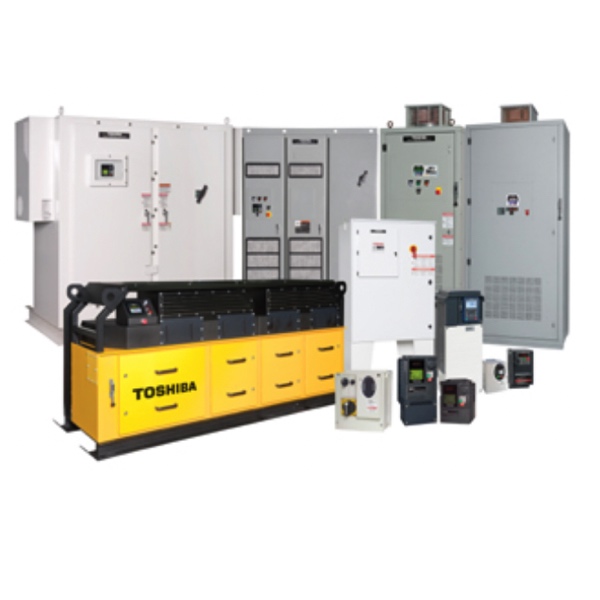Toshiba VFDs

Toshiba Variable Frequency Drives (VFDs) are respected for their reliability and advanced features. They are well-suited to systems where precise control of motor speed and torque (constant torque and variable torque) is required—performance that boosts energy efficiency. These servos don't work with capacitors in the same way that fans or pumps do; instead, they use electronic power conditioning (EPC) to link the drive module to the servo.
Toshiba's VFDs are recognized for their modern control options. They use advanced algorithms that give smooth and precise motor control, with a trio of operating modes allowing for very flexible regulation of motor speed and torque—voltage-frequency control, V/Hz control, and full vector control (VFC). Controlling and programming the Toshiba VFDs is relatively simple. User-friendly software allows easy setup and configuration of the versatile VFDs to suit a wide array of applications across many industries.
FAQs
Does Toshiba's adjustable speed drive standard features include manual torque boost?
Yes, Toshiba's adjustable speed drives often include standard features such as manual torque boost, which allows for enhanced control of motor torque during low-speed operation.
Does Toshiba's low voltage adjustable speed drive's compact design have a reduced component count leading to a small footprint?
Yes, Toshiba's low voltage adjustable speed drives feature a compact design with a reduced component count, resulting in a smaller footprint and increased reliability.
Motor Starters
Motor starters safely start and stop a motor in industrial applications. They are designed with a contactor, overload and circuit protection. They are used when basic motor control is required, where torque on the motor is not a concern and speed control is not needed. The advantages of motor starters include: lower cost, allows for remote operation, allows for monitoring of motor state (with the use of auxiliary contacts) and they are safe and efficient. The disadvantages include: high inrush current that can cause fuses to blow and breakers to trip if the inrush is too high, and the starter will allow a full torque to start the motor which can cause the motor to ramp up to full speed very quickly potentially causing the motor to wear and degrade prematurely.
Soft Starters
Soft starters protect motors from inrush current by gently ramping up the motor to full speed. They provide all of the same functions as a traditional motor starter. The advantages of soft starters include: they are less expensive than a VFD when only startup control is needed, they are a smaller system than a VFD where space is a concern and they prevent unwanted torque upon startup, prolonging the life of the motor. The disadvantages include: they are more expensive than a traditional motor starter and they do not allow for full speed control.
Variable Frequency Drives (VFDs)
Variable Frequency Drives (VFDs) allow for the slow ramp up of a motor during startup and the slowing down of the motor during shutdown. They also allow for full speed control during the entire run cycle of the motor. VFDs provide the same functions as both the traditional motor starters and soft starters. The advantages of VFDs include: full speed control (start, stop and in-between), more custom control and monitoring, energy savings due to efficient motor usage and less wear and tear on the motors. The disadvantages include: they are more expensive and larger than other motor control options and they generate heat that may require fans or AC units.

